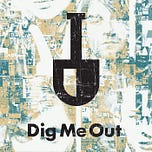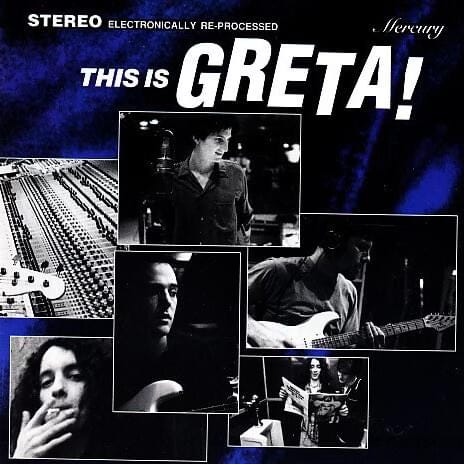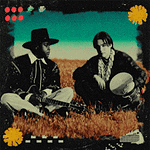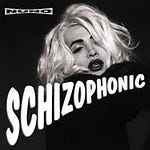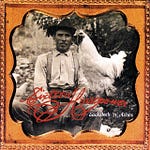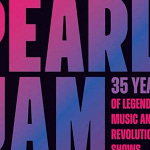What happens when a band has everything going for them—major label support, impressive musicians, a powerful sound—but still vanishes without a trace? The story of Greta’s second album “This Is Greta” from 1995 is a perfect case study in how the music industry’s desperate chase for the next big thing often overlooks genuine artistry hiding in plain sight.
The tragedy isn’t just that you’ve never heard of this record. It’s that in an era obsessed with authenticity, a band this real slipped through the cracks entirely.
The Setup for Stardom That Never Came
Picture this: Los Angeles, 1993. Mercury Records signs a four-piece alternative rock band fronted by Paul Plagens, a charismatic singer who wore dresses on stage and possessed a voice that could channel everything from Bob Pollard’s melodic sensibilities to Beatles-esque pop perfection. Their secret weapon? Brad Wilk on drums—who would leave shortly after to join a little band called Rage Against the Machine.
The label went all-in on their debut almost absurd seven singles from an 11-song album. One of those singles was actually a demo of a song that would later appear on their sophomore effort—a marketing strategy so bizarre it defies explanation. Despite heavy promotion and MTV exposure, including memorable appearances on Beavis and Butthead, the album failed to connect.
By 1995, when “This Is Greta” arrived, the music industry had moved on. Mercury quietly released the album with minimal fanfare, and the band was dropped shortly after. Paul Plagens, the dress-wearing frontman who had once captivated audiences with his theatrical intensity, would continue making music in various projects until his death from hepatitis C in 2015.
The Record They Should Have Heard
Here’s what’s maddening about the whole story: “This Is Greta” is actually a remarkable piece of work. Where their debut was rough around the edges and stereotypically ’90s, this sophomore effort found the band hitting their stride with a sound that was both familiar and refreshingly unique.
The album opens with “About You,” the only track to receive a music video, and immediately showcases what made this band special. Plagens’ voice cuts through the mix with an almost power-pop sensibility, even when the band gets heavy. It’s a technique that recalls Matthew Sweet’s approach to alternative rock—keeping the pop melodies intact while adding just enough grit to maintain credibility.
The production, likely influenced by the era’s push toward radio-friendly polish, gives the record a big, room-filling sound. The bass work, in particular, stands out across nine of the eleven tracks—not overbearing, but present enough to add melodic counterpoints and rhythmic complexity that elevates the entire recording.
Songs like “Warm Disease” break free from the predictable verse-chorus-verse formula that plagues much of the record, incorporating tempo changes and arrangements that recall everything from Guided by Voices to Queen. It’s in these moments that you hear what Greta could have become with more time and support.
Lost in the Post-Grunge Shuffle
The timing couldn’t have been worse. By 1995, the alternative rock landscape was fracturing in multiple directions. Bush’s “Sixteen Stone” was dominating with polished post-grunge anthems like “Glycerine,” while Britpop bands like Oasis and Blur were capturing attention with their own brand of melodic rock. Meanwhile, the major labels were chasing anything that might be the next Nirvana or Pearl Jam.
Greta fell into the worst possible category: too polished for the underground, too unconventional for mainstream radio, and lacking the immediate hooks that defined the era’s biggest hits. When your single is called “About You”—perhaps the most generic song title imaginable—you’re already fighting an uphill battle against tracks with names like “Cumbersome” and “Possum Kingdom” that lodged themselves in listeners’ brains through sheer memorability.
The band’s live performances only added to the confusion. Opening for acts like Candlebox, Plagens’ theatrical stage presence and cross-dressing aesthetic left audiences unsure what to make of them. One contemporary review noted how Greta “actually lived up to the buzz while Candlebox may have snuffed it,” but by then, the window for building momentum had largely closed.
The Songs That Deserved Better
Strip away the marketing failures and industry missteps, and you’re left with songs that still hold up nearly three decades later. “Some People” demonstrates the bass-forward approach that makes the album distinctive, while “Charade” and “Silver Blue” showcase the band’s Beatles influences filtered through a ’90s alternative lens.
“Nothing At All,” the album’s closing track, hints at what might have been—a spacious, atmospheric piece that suggests the band was capable of much more than the verse-chorus-verse formula they sometimes fell back on. It’s the kind of song that makes you wonder what a third Greta album might have sounded like.
Even the album’s weaknesses reveal interesting choices. When the band ventures into more metal territory on tracks like “Anomaly” or “Rocking Chair” (originally written during the first album sessions), they maintain their melodic sensibilities rather than simply turning up the aggression. It doesn’t always work, but it shows a band committed to their own vision rather than chasing trends.
The Bigger Picture
Greta’s story isn’t unique—it’s representative of countless bands caught in the major label machine during alternative rock’s commercial peak. The industry’s approach of overwhelming promotion followed by quick abandonment created a landscape littered with promising artists who never got the chance to develop their sound or find their audience.
The band’s experience also highlights how difficult it was for genuinely eclectic artists to find their place in the increasingly segmented music market of the mid-’90s. While the alternative rock umbrella was supposedly broad enough to encompass everything from Nirvana to No Doubt, the reality was that success required fitting into increasingly narrow categories.
What makes “This Is Greta” worth rediscovering isn’t just the quality of the songs—though they certainly hold up—but what it represents. Here was a band that understood the power of melody, respected their influences without slavishly copying them, and had the chops to back up their ambitions. In a more rational world, they would have been given time to grow and develop their sound.
The story of Greta and “This Is Greta” offers a fascinating glimpse into the complex machinery of the music industry during alternative rock’s peak years. For those interested in diving deeper into this forgotten gem and countless others like it, the Dig Me Out podcast provides essential listening for anyone curious about the roads not taken in rock history.
Songs In This Episode:
Intro - About You
9:08 - Some People
11:35 - Charade
18:03 - Rocking Chair
23:47 - Nothing At All
Outro - Stained


